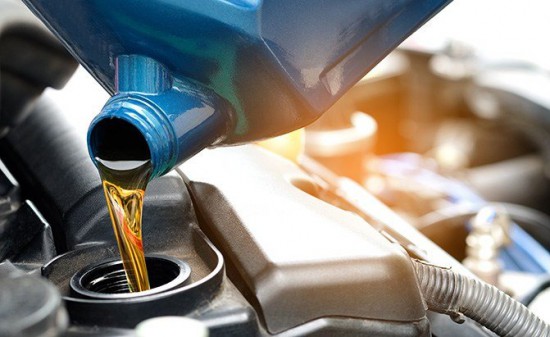- Call us: 01322-401105
- Get Free Appointment →

- June 12, 2021
- Posted by Admin
- Views 2915
The right engine-oil for your vehicle.
One of the most essential things used in a car is the engine oil. Using the right engine oil with the right grade plays a vital role in improving the performance and the lifespan of your vehicle’s engine.
The fuel economy can also vary largely due to it. Before going into details, it is important to know some of the things the engine oil actually does to ease our drive.
Firstly, the lubricant helps reduce friction among various engine components, at various stages of the combustion cycle, reducing the wear and tear of the internal parts of the engine. Secondly, the motor oil plays out the essential job of cleaning the ‘sludge’ -- the sticky by-product left behind as petrol burns, from the engine block, which would in some way or another cause engine blockage. And thirdly, the engine oil also helps neutralize the acids that are discharged at any phase of the combustion procedure, from the fuel and oxidation of different oils and lubricants.
It is also very important to note that, not all engine oils function or operate the same way, so not knowing the right grade of lubricant you are using could be fatal for your engine. It is best to follow the instructions given by the car manufacturer, as these recommendations are based on some parameters of your vehicle.
Engine oils come in different grades, like mentioned above. The grades are determined on the basis of their viscosities. The viscosity of an oil is measured by its resistance to flow. Different engine oils have different viscosities at room temperature and they also react differently to temperature changes. So, selecting the right grade largely depends on your geographical location and the climate of the area you are driving in. The grading is always mentioned on the body of the container, for example a 5W-30 or a 10W-30. The ‘W’ stands for Winter; this measurement is related to how an oil flows when it is cold (the temperature at engine start-up). Therefore, the smaller the number, the better it will flow. This is important to understand that these lubricants naturally thicken as they cool, and thin as they are heated.
It is shocking to see how little workshops know, regarding which grade to recommend. The general rule that one must follow -- since Bangladesh is typically a warm place to drive in -- is to use a slightly thicker grade of oil such as a 10W-30 especially for older engines. The logic behind it is that during the summer months, the heat affects the oil and causes it to thin out. For a newer one, you’d be better off with a synthetic 5W-30 which is a multi-grade oil for use in both low starting temperatures as well as high summer temperatures.
There is a multitude of brands to select from, namely: Mobil One, Shell Helix Ultra, and Castrol. There are some other, relatively newer, brands in the market which have gained popularity, such as Citgo, an American brand which made its entry into the market in 2015, and provides lubricants of all grades.
In order to keep your engine running smoothly, it is recommended by many to change engine oil every three months, or 3000kms, whichever comes first. This should be maintained strictly, especially for CNG driven cars, which are very common in our country. It is wise to invest on a good lubricant than to waste both time and money at a workshop. Having sound good knowledge on the matter will ensure easier maintenance and longevity of your precious vehicle.
The fuel economy can also vary largely due to it. Before going into details, it is important to know some of the things the engine oil actually does to ease our drive.
Firstly, the lubricant helps reduce friction among various engine components, at various stages of the combustion cycle, reducing the wear and tear of the internal parts of the engine. Secondly, the motor oil plays out the essential job of cleaning the ‘sludge’ -- the sticky by-product left behind as petrol burns, from the engine block, which would in some way or another cause engine blockage. And thirdly, the engine oil also helps neutralize the acids that are discharged at any phase of the combustion procedure, from the fuel and oxidation of different oils and lubricants.
It is also very important to note that, not all engine oils function or operate the same way, so not knowing the right grade of lubricant you are using could be fatal for your engine. It is best to follow the instructions given by the car manufacturer, as these recommendations are based on some parameters of your vehicle.
Engine oils come in different grades, like mentioned above. The grades are determined on the basis of their viscosities. The viscosity of an oil is measured by its resistance to flow. Different engine oils have different viscosities at room temperature and they also react differently to temperature changes. So, selecting the right grade largely depends on your geographical location and the climate of the area you are driving in. The grading is always mentioned on the body of the container, for example a 5W-30 or a 10W-30. The ‘W’ stands for Winter; this measurement is related to how an oil flows when it is cold (the temperature at engine start-up). Therefore, the smaller the number, the better it will flow. This is important to understand that these lubricants naturally thicken as they cool, and thin as they are heated.
It is shocking to see how little workshops know, regarding which grade to recommend. The general rule that one must follow -- since Bangladesh is typically a warm place to drive in -- is to use a slightly thicker grade of oil such as a 10W-30 especially for older engines. The logic behind it is that during the summer months, the heat affects the oil and causes it to thin out. For a newer one, you’d be better off with a synthetic 5W-30 which is a multi-grade oil for use in both low starting temperatures as well as high summer temperatures.
There is a multitude of brands to select from, namely: Mobil One, Shell Helix Ultra, and Castrol. There are some other, relatively newer, brands in the market which have gained popularity, such as Citgo, an American brand which made its entry into the market in 2015, and provides lubricants of all grades.
In order to keep your engine running smoothly, it is recommended by many to change engine oil every three months, or 3000kms, whichever comes first. This should be maintained strictly, especially for CNG driven cars, which are very common in our country. It is wise to invest on a good lubricant than to waste both time and money at a workshop. Having sound good knowledge on the matter will ensure easier maintenance and longevity of your precious vehicle.
Latest Posts

Battle of the 2021 Toyota Corolla and Honda Civic: what do local enthusiasts think?
- June 12, 2021
- 2622 views
Tags Cloud
© 2025 toyoautobd.com All rights reserved.
Developed & Maintained by positiveitsolution.com
